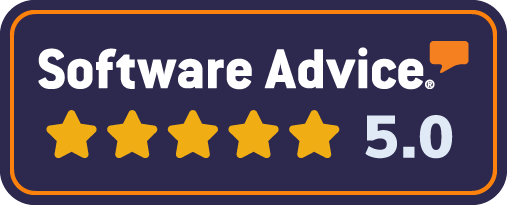Internal links are the unsung heroes of SEO. They’re not just navigational aids; they’re powerful tools that can significantly boost your website’s search engine performance.
At Emplibot, we’ve seen firsthand how effective internal linking strategies can transform a site’s visibility and user experience. In this post, we’ll explore the best practices for internal links for SEO in 2025, helping you maximize your website’s potential.
Contents
ToggleWhy Internal Links Are Essential for SEO
Internal links form the backbone of a well-structured website. They play a vital role in shaping your site’s architecture and enhancing its search engine optimization (SEO) performance. At their core, internal links connect different pages within your website, creating a network of information that both users and search engines can navigate.
Enhancing Site Structure and User Experience
Internal links significantly improve your website’s structure and navigation. They create clear pathways for users to explore your content, making it easier for them to find what they need. This improved user experience leads to longer visit durations and lower bounce rates.
Distributing Link Equity Across Your Site
One of the most powerful aspects of internal linking is its ability to distribute link equity throughout your website. When you link from a high-authority page to a less prominent one, you share some of that authority. This process can help boost the ranking potential of your lesser-known pages. Link equity distribution affects SEO by prioritizing authority to key pages through internal links, boosting rankings.
Guiding Search Engines Through Your Content
Search engines use internal links to understand the relationship between different pages on your site. This helps them grasp your content hierarchy and determine which pages are most important. Strategic placement of internal links creates a roadmap for search engines, guiding them to your most valuable content. Google’s own SEO starter guide emphasizes the importance of a logical link structure in helping search engines understand your site’s content.
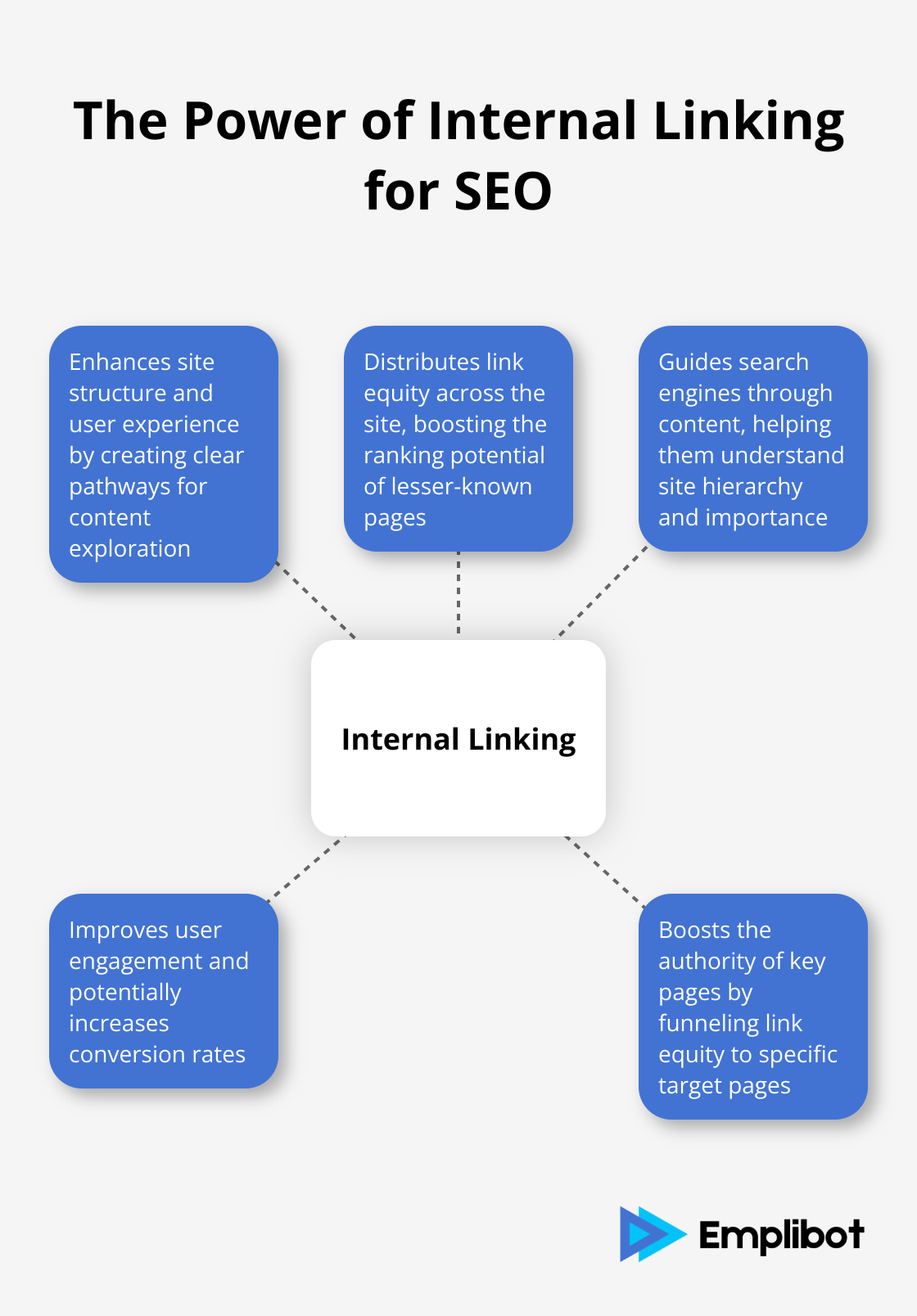
Improving User Engagement and Conversion Rates
Well-placed internal links can significantly increase user engagement on your site. They encourage visitors to explore more of your content, leading to longer session durations and potentially higher conversion rates.
Boosting the Authority of Key Pages
Internal linking allows you to funnel link equity to specific pages you want to rank higher in search results. This strategy can be particularly effective for boosting the authority of product pages or key landing pages. Internal linking at scale can improve rankings and boost organic traffic, as revealed in proven strategies with case studies.
As we move into the next section, we’ll explore the best practices for internal linking in 2025, providing you with actionable strategies to maximize the power of your internal links and boost your SEO performance.
How to Master Internal Linking in 2025
Internal linking has evolved significantly in recent years, and mastering it in 2025 requires a strategic approach. Here’s what you need to know to stay ahead of the curve.
Craft Descriptive and Relevant Anchor Text
The days of generic “click here” anchor text are over. In 2025, search engines are smarter than ever, and they pay close attention to the words you use in your links. Use descriptive, keyword-rich anchor text that accurately reflects the content of the linked page. This helps both users and search engines understand what to expect when they click.
For example, instead of “Learn more about our services here,” use “Explore our comprehensive digital marketing services.” This approach not only improves user experience but also sends clear signals to search engines about the relevance of the linked content.
Focus on Content Relevance and Quality
When you add internal links, always prioritize relevance and quality over quantity. Link to pages that genuinely add value to the user’s journey. This approach not only improves user experience but also strengthens the thematic relationships between your pages.
A study found that pages with a high number of relevant internal links tend to rank better in search results. However, it’s important to maintain a balance. Overdoing it can lead to a cluttered user experience and potentially raise red flags with search engines.
Implement a Strategic Content Cluster Model
The hub and spoke model (also known as topic clustering) remains a powerful strategy in 2025. This approach involves creating a central pillar page (the hub) that provides a comprehensive overview of a broad topic, with multiple related pages (the spokes) linking back to it.
This structure not only helps search engines understand the relationship between your content but also improves user navigation. A case study showed that implementing a topic cluster model led to a 50% increase in organic traffic to a website within just six months.
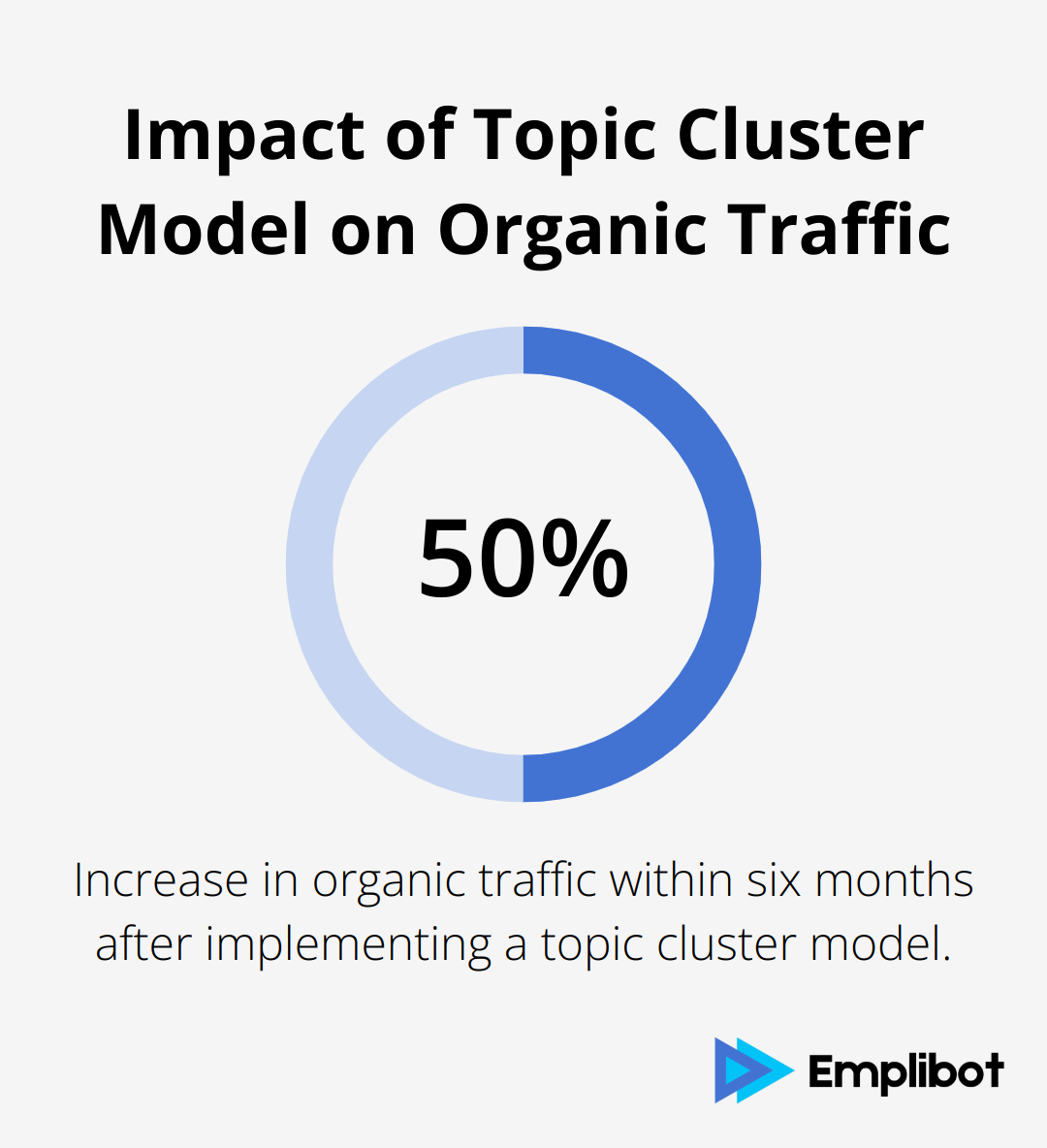
Prioritize Your Cornerstone Content
Cornerstone content provides essential information, guides visitors, and helps a website rank higher in search results. In 2025, it’s important to give these pages extra attention in your internal linking strategy.
Regularly link to your cornerstone content from relevant blog posts and category pages. This not only helps distribute link equity but also increases the visibility of your most valuable content. A study found that pages with more internal links pointing to them tend to rank higher in search results.
Internal linking is not a set-it-and-forget-it task. It requires ongoing attention and optimization. Regularly audit your internal links, update outdated content, and adjust your strategy based on performance metrics. In the next section, we’ll explore advanced internal linking strategies that will take your SEO efforts to new heights in 2025.
Advanced Internal Linking Techniques for 2025
Data-Driven Link Opportunities
Smart internal linking starts with data. Tools like Google Analytics and heatmap software reveal which pages users visit most and how they navigate your site. This information helps identify high-value pages that deserve more internal links.
Strategic internal links can lift rankings by 20-40% without new backlinks. Tools like Yoast, Link Whisper, Screaming Frog, Ahrefs, and others can help you identify and implement these opportunities.
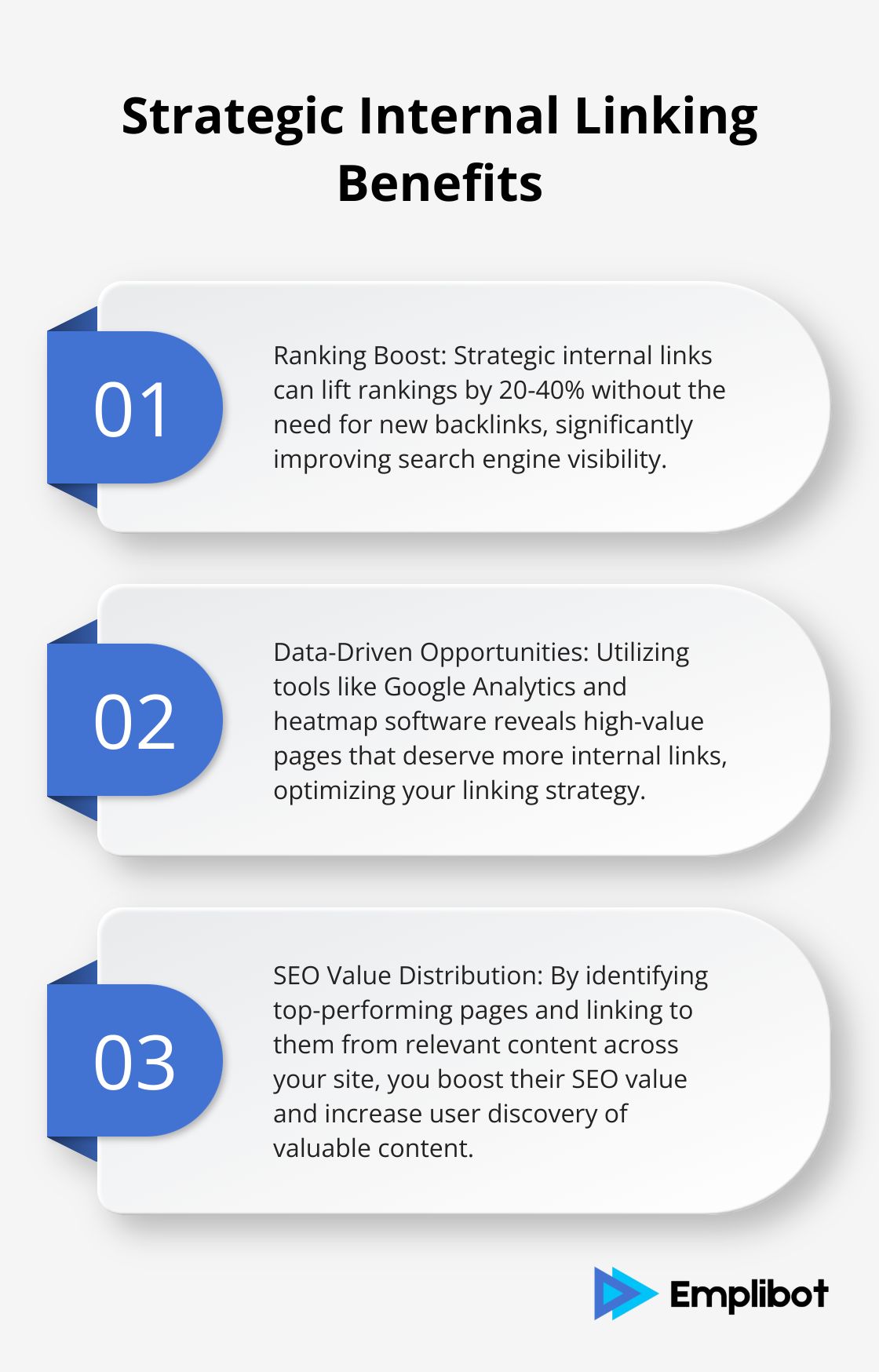
Use this data to your advantage. Identify your top-performing pages and strategically link to them from relevant content across your site. This boosts the SEO value of these pages and increases the likelihood of users finding your most valuable content.
Context-Aware Linking in Long-Form Content
Long-form content presents unique opportunities for internal linking. As you explore a topic in depth, you can naturally reference related concepts and link to relevant pages on your site.
Over half (51%) of people claim that they are more likely to share video with their content, more than any other type of content. This makes multimedia content ideal for implementing a robust internal linking strategy.
When you create long-form pieces, think like a Wikipedia editor. Link to definitions, related concepts, and supporting evidence within your own site. This improves user experience by providing additional context and strengthens your site’s topical authority in the eyes of search engines.
Mobile-First Internal Linking
With Google’s mobile-first indexing, optimizing your internal linking for mobile devices is essential. Mobile users have different browsing habits and expectations compared to desktop users.
When you implement internal links on mobile, consider these factors:
- Touch-friendly link placement
- Visible and easily clickable anchor text
- Avoiding excessive links that can clutter small screens
Test your internal linking structure on various mobile devices to ensure a smooth user experience. If it works well on mobile, it will likely work well on desktop too.
Dynamic Internal Linking Based on User Behavior
Advanced internal linking in 2025 involves dynamic link placement based on user behavior. This technique uses machine learning algorithms to analyze user interactions and preferences, then adjusts internal links in real-time to provide the most relevant content to each visitor.
For example, if a user shows interest in a particular topic (through their browsing history or time spent on certain pages), the system can automatically prioritize internal links to related content. This personalized approach can significantly improve user engagement and time on site.
Leveraging Internal Links in Multimedia Content
Don’t limit your internal linking strategy to text-based content. In 2025, multimedia content (videos, infographics, podcasts) plays a significant role in SEO and user engagement. Try to incorporate internal links within these formats.
For videos, include clickable annotations or end screens that link to related content on your site. In infographics, embed QR codes or shortened URLs that lead to relevant pages. For podcasts, mention and link to specific pages in your show notes.
This multimedia approach to internal linking not only improves SEO but also provides a more interactive and engaging user experience across different content formats.
Final Thoughts
Internal links for SEO play a vital role in enhancing website performance, user experience, and search engine rankings. You must implement the best practices and advanced techniques we’ve discussed to create a robust internal linking strategy. Regular audits, updates, and adjustments based on performance metrics will ensure your website remains well-structured and easily navigable.
Emplibot understands the importance of internal linking in creating a cohesive and SEO-friendly website. We’ve developed an automatic internal linking feature as part of our comprehensive content marketing solution. Our free internal linking tool can help you identify link opportunities, analyze your current internal linking structure, and suggest improvements to boost your SEO performance.
You can create a well-structured, easily navigable website that both users and search engines will appreciate. Start implementing these strategies today to improve your website’s performance in the competitive digital landscape of 2025 and beyond.

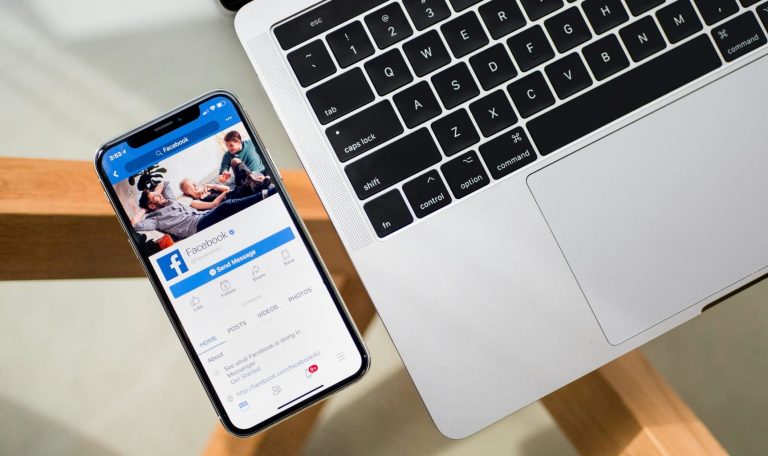
![Google Business Profile Optimization [Local SEO]](https://wp.emplibot.com/wp-content/uploads/emplibot/google-business-profile-optimization-hero-1756624038-768x456.jpeg)
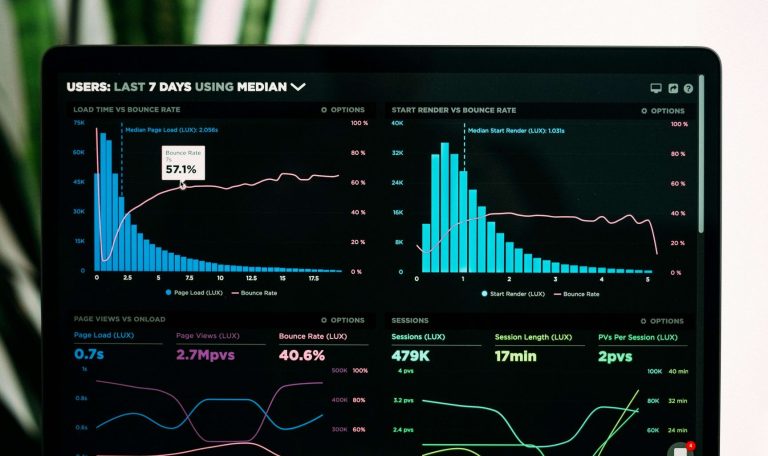


![SEO Content Creation [Tips and Techniques]](https://wp.emplibot.com/wp-content/uploads/emplibot/seo-content-creation-hero-1756278494-768x456.jpeg)



